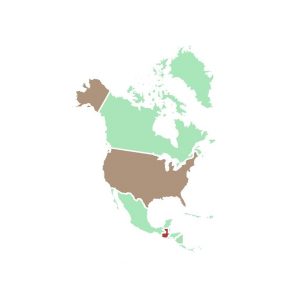- September 6, 2019
The U.S. has just signed a new migration agreement with Guatemala which appears to authorize the U.S. to transfer asylum claimants who have passed through Guatemalan territory back to Guatemala to have their claims examined by the Guatemalan refugee determination system.[1] Much about the agreement remains unclear, including how readily this new power of transfer will be invoked, and the logistics of such a procedure moving forward.[2] The legality of the agreement is also currently in question, with Guatemalan officials arguing[3] that the government cannot enter into such an agreement without the approval of the Guatemalan Congress.[4] Should the agreement hold, however, considering Guatemala’s position as a transit country for migration from the rest of Central America, the policy would effectively prohibit a large number of Central Americans from accessing the border between Mexico and the U.S. Significantly, Salvadorian and Honduran migrants and asylum seekers will now be required to seek protection from a country experiencing the same issues they are trying to escape.[5]
Together with Honduras and El Salvador, Guatemala forms the Northern Triangle of Central America. Migrants from this region are fleeing pervasive violence associated with drug trafficking and gang activity, corruption, poverty and food shortages,[6] and account for over 75% of all southern border apprehensions in the 2019 fiscal year to date.[7] Since its announcement on July 26th, the U.S.’ agreement with Guatemala has been widely criticized, with strong opposition to the Trump administration framing it as a ‘Safe Third Country’ agreement. Both American and Guatemalan authorities have stated that this title has been used as a “colloquial term” only, as Guatemala is not a “safe country.”[8] In an interview with a Guatemalan newspaper, Enrique Degenhart, the Guatemalan Interior Minister who signed the agreement, insisted that the agreement “is not an asylum agreement, but a support to the U.S.” for the migration challenges they are presently facing.[9]
Local activists and international organizations have been vocal regarding the lack of resources and institutional capacity Guatemala has to provide services to those currently seeking protection at its borders,[10] let alone those Salvadorians and Hondurans who will now be deported from the U.S. Claimants who enter Guatemala apply for protection to the Office of International Migration Affairs (ORMI) in the Guatemalan Migration Institute. Between 2015 and 2017, the ORMI received 452 applications for refuge, including 181 applications from El Salvador and 48 from Honduras. Between the same years, over 155,500 Salvadorians and Hondurans applied for

asylum all over the world, with the majority of claims being made in Mexico and the U.S.[11] The ability of Guatemala to process even a small number of those who may now be seeking protection is questionable. It is also unclear how Guatemala will ensure the safety of asylum seekers when it cannot protect its own citizens from endemic violence and crime.[12] Neither the U.S. nor Guatemala has assigned a budget to achieve the goals of this agreement, which will drastically affect the responsibility of providing for education, housing and other social services necessary to ensure the overall wellbeing of those seeking asylum.[13]
Importantly, while families and single adult claimants will most certainly be affected by the new agreement, unaccompanied children are exempt from transfer. Under the agreement, an unaccompanied child is defined as an “applicant for protection who has not reached the age of eighteen and whose parent or legal guardian is not present or available to provide care and physical custody.”[14] Considering the already high number of unaccompanied children apprehended at the Mexico-U.S. border – 63,624 in the 2019 fiscal year to date, representing a 70% increase from the same time last year[15] – and no clear end to the socioeconomic and security issues currently driving migration, the agreement will likely result in more unaccompanied children accessing the border. Whether these new circumstances mean that more families will be paying smugglers to bring their children to the border or more children will be embarking on the journey alone, more children will be in danger.
Unaccompanied children travelling to the Mexico-U.S. border (the majority of these from the Northern Triangle) are at a heightened risk of kidnapping, sexual violence and sex trafficking, forced labour, and forced gang recruitment.[16] Women, LGBTQ, and Indigenous migrants and asylum seekers, including children, in particular experience disproportionate levels of violence and sexual violence.[17] Although official crime statistics are likely low, 68% of refugees entering Mexico in 2017 reported having experienced violence during their journey,[18] and studies estimate that between 24% and 80% of women transiting through Mexico will experience sexual violence before reaching the border, along with 5% of men and 50% of LGBTQ individuals.[19] In addition to the risks posed by human trafficking, which is a persistent issue in Central America and Mexico, with children accounting for three in every five victims of trafficking in these regions, refugees represent profitable targets for human smuggling networks, as well as corrupt police, military and government officials who facilitate their activities at various junctures.[20] Children whose families pay smugglers thousands of dollars to guide them to the border are at a heightened risk of debt bondage and sexual and labour exploitation by these groups.[21] While children travelling with larger groups are not invulnerable to violence and trafficking, the new agreement with Guatemala increases the likelihood of more children facing these dangers alone.
The Canadian government has thus far remained silent on the agreement with Guatemala, despite demands from legal experts, academics, and refugee advocacy groups to hold the U.S. accountable for its commitments to international asylum laws.[22] There has also been a call for Canada to stop recognizing the U.S. as a safe country for refugees and suspend its own ‘Safe Third Country’ agreement with the U.S.[23] While the U.S.’ agreement with Guatemala appears to be largely modeled off of its agreement with Canada, there are some significant differences. Most notably, under the agreement with Canada, claimants who have family members with legal status in the territory, including a pending refugee claim, are exempt from the agreement and will not be transferred. The agreement with Guatemala makes no such exception. Additionally, while both agreements identify the exchange of information between governments as necessary to the effective implementation of the agreement, only the agreement with Canada includes a commitment to “ensure that information is not exchanged or disclosed in such a way as to place refugee status, claimants or their families at risk in their countries of origin.”[24] Finally, the agreement with Canada outlines a plan to cooperate with the United Nations High Commissioner for Refugees (UNHCR) in the monitoring of the agreement, and no such plan is indicated in the agreement with Guatemala.[25]
Along with the Trump administration’s short-lived ‘Zero Tolerance’ policy, increasingly harsh family separation and detention practices, and ongoing efforts to build a wall along the southern border, the agreement with Guatemala is simply the latest in a series of systematic actions by the U.S. to restrict Central American migrant and asylum seeker flows. Canada should respond by strengthening access to protection for Central American refugees. This can involve increasing current resettlement efforts, such as the United Nations’ Protection Transfer Agreement program, and expanding resettlement pathways for Central American families in particular. In 2018, Canada accepted 427 Central American refugees.[26] A recent report from the UNHCR predicts that by the end of 2019 the humanitarian crisis in Central America will have displaced up to 539,500 people.[27] Canada has extensive experience in dealing with social and political crises generating asylum-seekers.[28] We can do more than we currently are. The question now is what is Canada’s responsibility to the people of Central America?
— Footnotes
[1] https://www.whitehouse.gov/briefings-statements/remarks-president-trump-signing-safe-third-country-agreement-guatemala/
[2] https://www.justsecurity.org/wp-content/uploads/2019/07/Guatemala-Cooperative-Agreement-with-Signature-Blocks-ENG.pdf
[3] https://www.prensalibre.com/guatemala/migrantes/estos-son-los-cuestionamientos-respecto-del-acuerdo-migratorio-firmado-entre-guatemala-y-ee-uu/
[4] https://www.nytimes.com/2019/07/26/world/americas/trump-guatemala-asylum.html?module=inline
[5] https://foreignpolicy.com/2019/07/30/trumps-safe-third-country-agreement-with-guatemala-is-a-lie/
[6] https://www.humanrightsfirst.org/sites/default/files/GUATEMALA_SAFE_THIRD.pdf
[7] https://fas.org/sgp/crs/homesec/R43702.pdf
[8] https://www.tellerreport.com/news/2019-07-28—guatemala–human-rights-activists-protest-against-asylum-agreements-with-us-.SJWEnj5zr.html
[9] https://www.prensalibre.com/guatemala/politica/degenhart-guatemala-dara-refugio-a-salvadorenos-y-hondurenos-para-frenar-viajes-a-ee-uu/
[10] https://www.prensalibre.com/guatemala/politica/degenhart-guatemala-dara-refugio-a-salvadorenos-y-hondurenos-para-frenar-viajes-a-ee-uu/
[11] https://www.acnur.org/op/op_fs/5b3e64214/informe-del-sistema-de-proteccion-en-guatemala-segunda-edicion.html
[12] https://www.prensalibre.com/guatemala/migrantes/acnur-no-se-logra-ser-un-tercer-pais-seguro-de-un-dia-para-otro/
[13] https://www.prensalibre.com/guatemala/politica/degenhart-guatemala-dara-refugio-a-salvadorenos-y-hondurenos-para-frenar-viajes-a-ee-uu/
[14] https://www.justsecurity.org/wp-content/uploads/2019/07/Guatemala-Cooperative-Agreement-with-Signature-Blocks-ENG.pdf
[15] https://www.acf.hhs.gov/orr/about/ucs/facts-and-data
[16] https://ploughshares.ca/pl_publications/central-american-migrants-face-perilous-journey/
[17] https://www.hrw.org/world-report/2018/country-chapters/guatemala
Menjívar, C., & Drysdale Walsh, S. (2019). Gender, violence and migration. In K. Mitchell, R. Jones, & J. L. Fluri, Handbook on critical geographies of migration (pp. 45-57). Northampton, MA: Edward Elgar Publishing.
[18] http://urbanspaces.msf.org/wp-content/uploads/2019/03/forced-to-flee-central-americas-northern-triangle_-a-neglected-humanitarian-crisis.pdf
[19] https://humanrights.berkeley.edu/sites/default/files/publications/5c081eae4.pdf
[20] https://www.unicef.org/publications/files/UNICEF_Child_Alert_2018_Central_America_and_Mexico.pdf
[21] https://www.unicef.org/child-alert/central-america-mexico-migration
[22] https://www.utsc.utoronto.ca/ccds/canada-must-do-more-tackle-central-america%E2%80%99s-refugee-crisis
[23] https://ccrweb.ca/sites/ccrweb.ca/files/stca-submission-2017.pdf
[24] Final Text Of The Safe Third Country Agreement – Canada.ca. (n.d.). Retrieved from https://www.canada.ca/en/immigration-refugees-citizenship/corporate/mandate/policies-operational-instructions-agreements/agreements/safe-third-country-agreement
[25] https://www.prensalibre.com/guatemala/migrantes/acnur-no-se-logra-ser-un-tercer-pais-seguro-de-un-dia-para-otro/
[26] https://irb-cisr.gc.ca/en/statistics/protection/Pages/RPDStat2018.aspx
[27]http://reporting.unhcr.org/sites/default/files/2019%20Expanding%20Operations%20in%20Central%20America%20%28February%202019%29.pdf
[28] https://www.theglobeandmail.com/opinion/article-canada-is-ignoring-its-own-hemisphere/
Authors

Tearney McDermott is Coordinator of the Ryerson Centre for Immigration and Settlement (RCIS).
Henry Parada is a Professor at Ryerson University cross-appointed to Social Work and Immigration and Settlement Studies.
The views expressed in this blog post are those of the author and do not necessarily reflect those of the Rights for Children and Youth Partnership project, Ryerson University, or our other partners.
